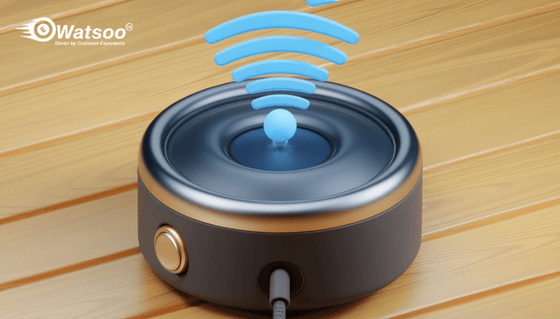The Bluetooth SIG is planning the next major update to Bluetooth Low Energy, namely Bluetooth 6, a version that aims to make wireless connectivity not only more reliable and scalable but also more energy-efficient for IoT devices. Whereas the previous releases brought into the spotlight features such as long range or higher throughput, Bluetooth 6 is characterised by a collection of system-level enhancements aimed at denser sensor deployments, more accurate positioning, lower latency and better coexistence in crowded radio environments.
Table of Contents
ToggleFor a sector dependent on BLE—wearables, smart-building devices, industrial sensors, asset-tracking tags—the advent of Bluetooth 6 is a major milestone.
Why is Bluetooth 6 crucial for IoT?
Bluetooth is still one of the most popular wireless technologies in the IoT space, but the scope of expectations for it has changed drastically. The devices of today are expected to function in mixed-spectrum settings, be powered by a small battery for several years, be able to communicate with hundreds or thousands of nodes in close vicinity, and support indoor positioning more and more. This change reflects the general trends in IoT towards greater intelligence at the edge, which we discussed in our article about on-device AI for IoT sensors.
Bluetooth 6 addresses these issues by adjusting the BLE architecture such that the devices can talk to each other more efficiently, deal with complex situations in a more predictable manner, and consume less energy while still being responsive.
More Efficient Spectrum Usage & Reduced Interference
With the 2.4 GHz environments getting more and more crowded, especially with the presence of Wi-Fi 6/7, Thread, Zigbee, and the private 5G in buildings, Bluetooth 6 comes with more intelligent channel selection and adaptive frequency management. These enhancements facilitate devices in avoiding interference almost all the time, which leads to fewer retries, more stable links, and thus, less energy is wasted.
It is especially important for smart factories and warehouses that are already installing tightly packed wireless systems. Open multi-protocol coexistence challenges were visible in the recent industrial connectivity projects like the Hitachi Rail−Ericsson private 5G smart factory deployment. Even though Bluetooth is working independently from 5G, areas that are flooded with wireless devices need a much more efficient way of coordinating than what earlier BLE generations could provide.
Lower Latency for Interactive & Real-time IoT
Bluetooth 6 should enable shorter connection intervals and better scheduling efficiency that would interactive devices to respond in a more timely manner. Wearables, industrial handhelds, and AR/VR peripherals, for instance, should experience a more consistent response. As for IoT sensors, lower latency makes it possible for them to quickly report events and get synchronised more accurately with the edge and cloud workflows, particularly in the case of industrial automation or logistics.
Improved Indoor Positioning and Direction Finding
With Bluetooth 5.1, the feature that allowed finding the direction through the Angle of Arrival (AoA) and Angle of Departure (AoD) was introduced. Bluetooth 6 further enhances indoor positioning by implementing more advanced synchronisation and filtering, which result in the stabilisation and improvement of the position accuracy. Systems that locate the movement of the real-time assets in warehouses, hospitals, transport hubs, or retail settings will probably be able to smoothly renew the location, and the energy consumption for each positioning cycle will be minimised.
This progress is in line with the general trend of ambient IoT tagging solutions becoming more popular, which also includes battery-free systems such as the Energous e-Sense platform, where determining the location accurately with low power is very important.
Scalability for High-Density Sensor Networks
The trend of smart buildings is to use countless BLE sensors aimed at residence analytics, climate control, asset presence detection, and access management. With Bluetooth 6, the broadcast and coordination path invented in Bluetooth 5.4 is deepened, thus the large networks can better manage traffic scheduling as well as handling of responses. This leads to reduced collision rates, fewer retransmissions, and more predictable operation at scale.
The extensive installation of this kind is mostly combined with the use of maintenance-free endpoints. The effectiveness and consistency of Bluetooth 6 are in line with the rise of energy-harvesting nodes that are mentioned in our energy-harvesting IoT analysis.
More Advanced Power-saving Techniques
Energy consumption has to do with the greatest problem for IoT devices. Bluetooth 6 is trying to lessen the time of the radio being active, allow deeper sleep states and optimise retransmission logic in such a way that devices will use less energy for a successful packet. A few such these advantages will appeal to the battery-powered sensors, wearables, remotes, and trackers that are obliged to operate for years with minimal maintenance, and that is what they are specifically intended for.
- Shorter airtime thanks to more intelligent schedules that reduce average energy per connection.
- Even deeper low-power states for longer idle periods without losing synchronisation.
- More productive attempts to keep from wasting energy in noisy environments.
How Bluetooth 6 differs from Bluetooth 5.x?
Bluetooth 5.x was instrumental in bringing about significant capability expansions such as extended range, higher throughput modes, direction finding, and new broadcast features. The new version of the standard, Bluetooth 6, doesn’t abandon these features; rather, it tweaks and streamlines them for actual implementation scenarios. The focus changes from maximum performance to dependable, scalable daily operation; thus, the coexistence, latency predictability, and overall energy profiles in dense networks are getting better.
Impact on key IoT Segments
The wearables and health devices would be the first to see the positive impact of connection speed-ups, along with energy conservation, which would lead to continuous sensing and notification-based service. Besides, accurate positioning would aid more in safety and activity tracking.
Smart buildings can have stable behaviour supported by large sensor fleets that help occupancy analytics, HVAC optimisation, and access control, chiefly in mixed wireless environments.
Industrial IoT deployments get a strong breathing partner in factories and warehouses where spectrum congestion and interference can be the main reasons for unreliability, but now can be addressed by better coexistence.
The asset tracking and the ambient IoT systems are little by little getting to be more and more dependable with stable direction finding and lowering energy consumption for each update, thus enabling logistics and retail-tracking using Bluetooth to be more efficient and accurate.
Migration Considerations for Manufacturers
Bluetooth 6 keeps functionality Unite with the older BLE generations, but the whole benefit of the upgrade calls for new controllers, firmware stacks, and gateway support, scheduling and synchronisation. Integration for the majority of OEMs will be done together with their hardware refresh and broader wireless roadmap, along with Wi-Fi 7, Thread/Matter, LPWAN, and private 5G.
Final Words: A Deployment-focused Upgrade
Perhaps one of the reasons why Bluetooth 6 is not a very publishable topic is that it hardly brings any new PHY modes or spectacular data rates, however, its enhancements are very much in line with the actual deployment of IoT on the ground: better coexistence, smoother coordination between large networks, more accurate indoor positioning, and improved battery performance in the long run. These improvements are going to have a significant impact on the next generation of BLE-based devices as the IoT fleets become more densely populated and power budgets shrink.


